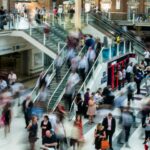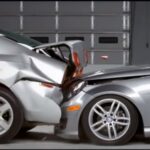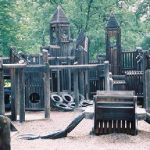Specialty Focus: Use of Force Incidents, Falls from Heights, Injury Analysis, Injury Causation, Punching or Kicking Injury, ATV Injuries, Low Speed Rear End, Construction accidents, Backover/Runover Accidents, Motor Vehicle Accidents, Child Seat Related Injuries, Helmet/Restraint Issues, eye injury, Domestic Altercations, Product Liability, Diving Accidents, Aircraft Accidents, Personal Watercraft Accidents.
Slips occur when the foot slides along the walking surface. Trips are caused by the swing foot becoming obstructed. Falls can occur after slips, trips or from being at height and becoming unsupported. Regardless, the injuries can often tell the difference between a slip, trip or fall from height. A bio-mechanical analysis can determine the cause of the injury.

There are a host of regulations, industry standards, guidelines and texts which manufacturers must use to assure that their product or play/recreation area is safe. When a Sport & Recreational injury occurs, it is important to understand which regulations and standards apply and how they may or may not be associated with a specific injury. A bio-mechanical evaluation can determine the mechanism of injury which can in-turn be used to determine if a product or a play area is defective.

FDA has strict regulations and guidelines for medical devices. Blood or tissue contact devices have some of the most stringent requirements. Lower-level devices like wheelchairs, glucose monitors, and crutches all have specific regulations and guidelines for proper design, manufacture, and sales/marketing. The medical device manufacturer is required to manage the device at all stages of development, use and even disposal.

There are a host of federal regulations, industry standards and other authoritative texts which can be used to ensure product safety. 3rd-party certifications are used to ensure a given product meets those regulations and standards. However, a careful analysis of the design process along with close scrutiny of user manuals and training materials must be conducted to determine if a product is defective. Additionally, a bio-mechanical analysis can determine if a given injury could even occur with a product or with misuse.

In the US, about 10,000,000 crashes/year occur. The greatest majority are minor however injuries can still occur under specific conditions. A bio-mechanical evaluation of a crash can determine if an injury can be associated with certain vehicle dynamics and kinematics. A bio-mechanical evaluation coupled with an accident reconstruction can determine if the injuries are associated with the crash or not.

Since the 1970’s, ASTM and US CPSC have promulgated industry standards and guidelines for manufacturers and owners to provide for a reasonable level of safety. However, about 200,000 injuries/year have occur with falls to the outstretched hand and falls from height being the most frequent injury pattern. Supervision, maintenance and proper equipment are often under great scrutiny when a child is injured and a court case proceeds. A bio-mechanical analysis of the injury can determine the mechanism of injury and how that may be associated with the equipment or lack of maintenance or supervision.

Search results of the National Institute of Health’s PubMed database on June 8, 2008 using the keywords “playground injury” displayed 173 articles. Of the 173 articles, 102 were epidemiologic studies, 13 were review articles, 9 addressed behavior, 7 were case studies of uncommon playground injuries, 4 were editorials, 6 addressed general playground safety, 10 addressed testing of surfacing and impact biomechanics and 19 addressed other injury topics while mentioning playgrounds.
Playground Injuries and NEISS
In 1971, the US CPSC commissioned the National Electronic Injury Surveillance System (NEISS) which is a probability sample of all consumer product injuries reporting to approximately 100 US hospital emergency departments. Sample playground injury cases were weighted to calculate a national estimate and the first national estimate for playground injuries in 1973 was 55,000.1 By 1975, the national estimate increased to 167,0001 and by 1994 increased to 244,340.2 The NEISS national estimate for all playground injuries for the years 1991 thru 2006 is shown in Figure 1.
1. CPSC. CPSC Invites Public To Develop Safety Regulation For Public Playground Equipment. March 7, 1975. Release # 75-024.
2. www.cpsc.com. downloaded May 9, 2008.
Playground Deaths
In the 16 year period from 1973 to 1989, an average of about 17 children died each year while playing on public or home playground equipment (total=286). [1] In 2001, CPCS reported an average of about 15 deaths per year for the years 1990-2000. [2]
– About 90% of these children are aged 12 or less.
– About 45% of the deaths resulted from strangulation/entanglement
– About 30% resulted from falls to the surface below or to other equipment
– About 16% resulted from equipment tipover or failure.
– About 3/4 of the deaths due to falls involved head injury.
1. Tinsworth, DK and Kramer, JT. Playground Equipment-Related Injuries and Deaths. US CPSC. April 1990.
2. Tinsworth, DK and McDonald, JE. Special Study: Injuries and deaths associated with children’s playground equipment. US CPSC. April, 2001.
